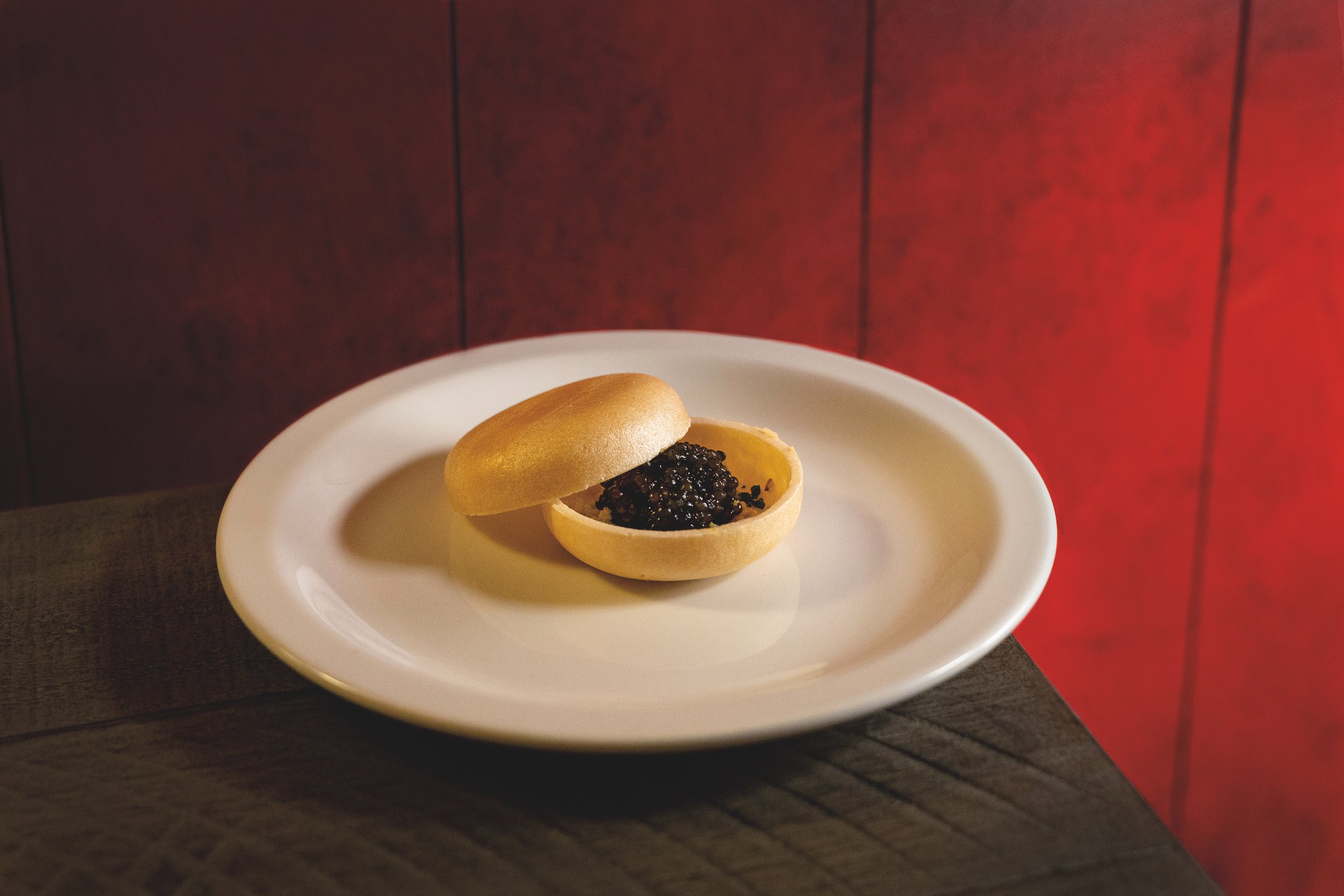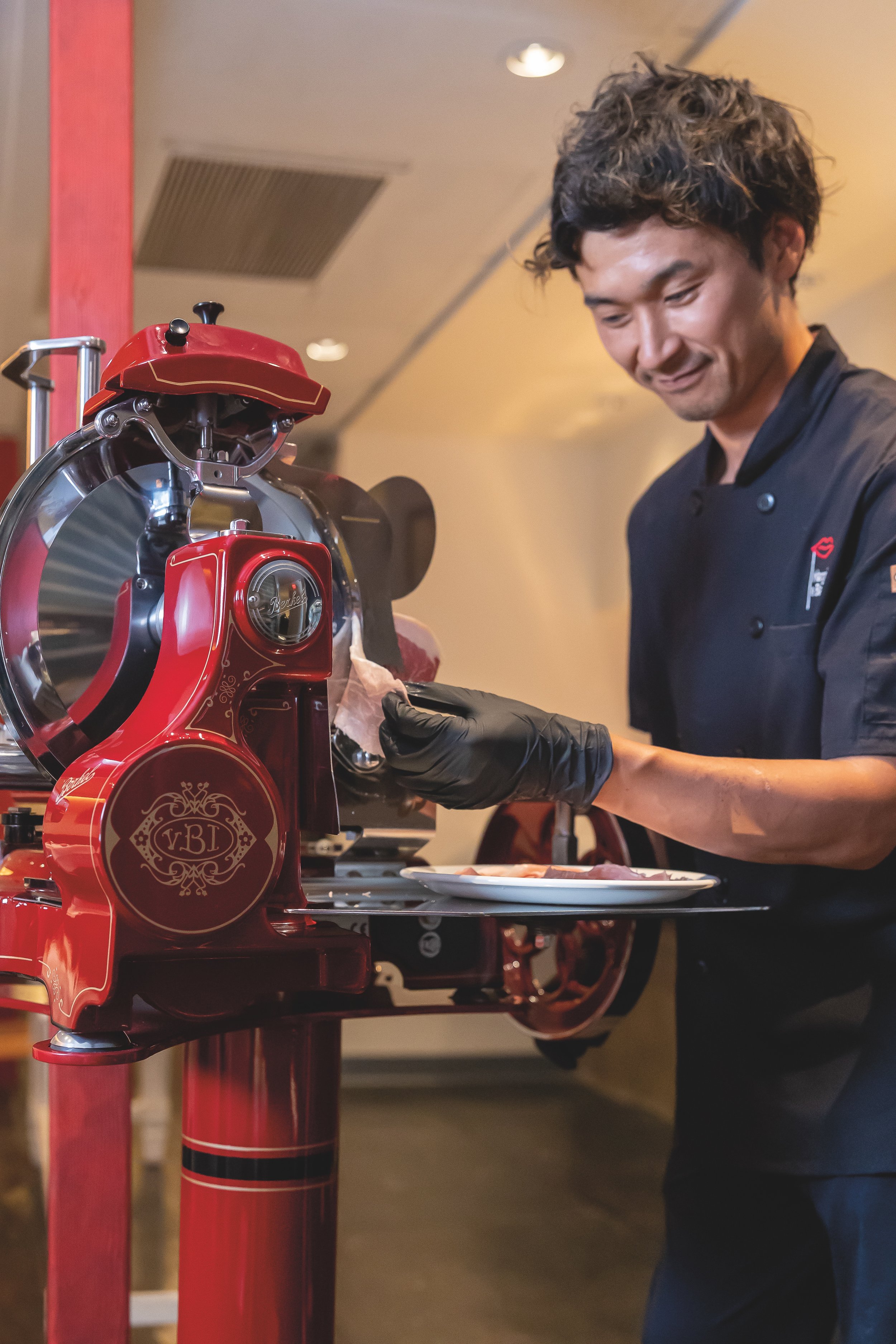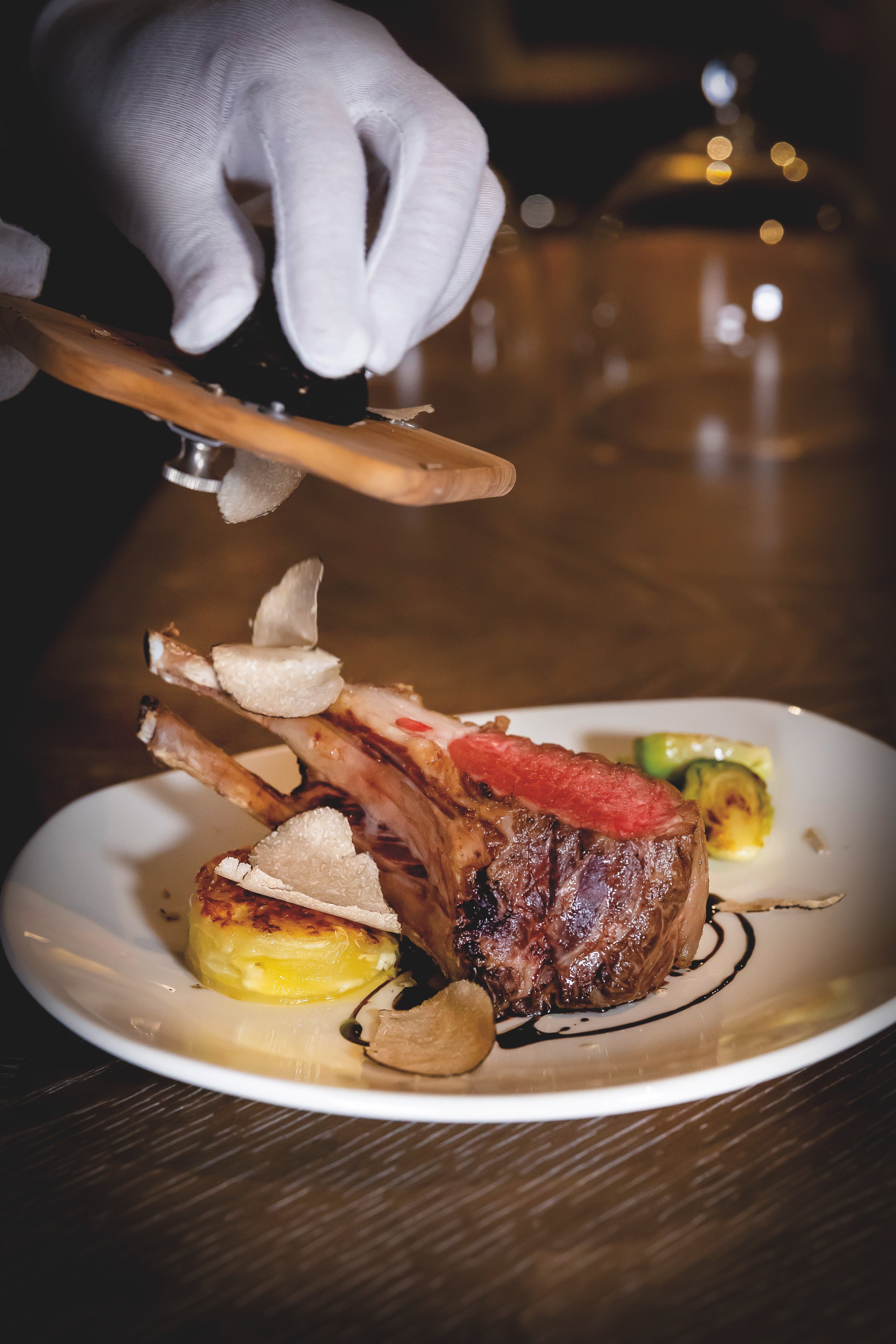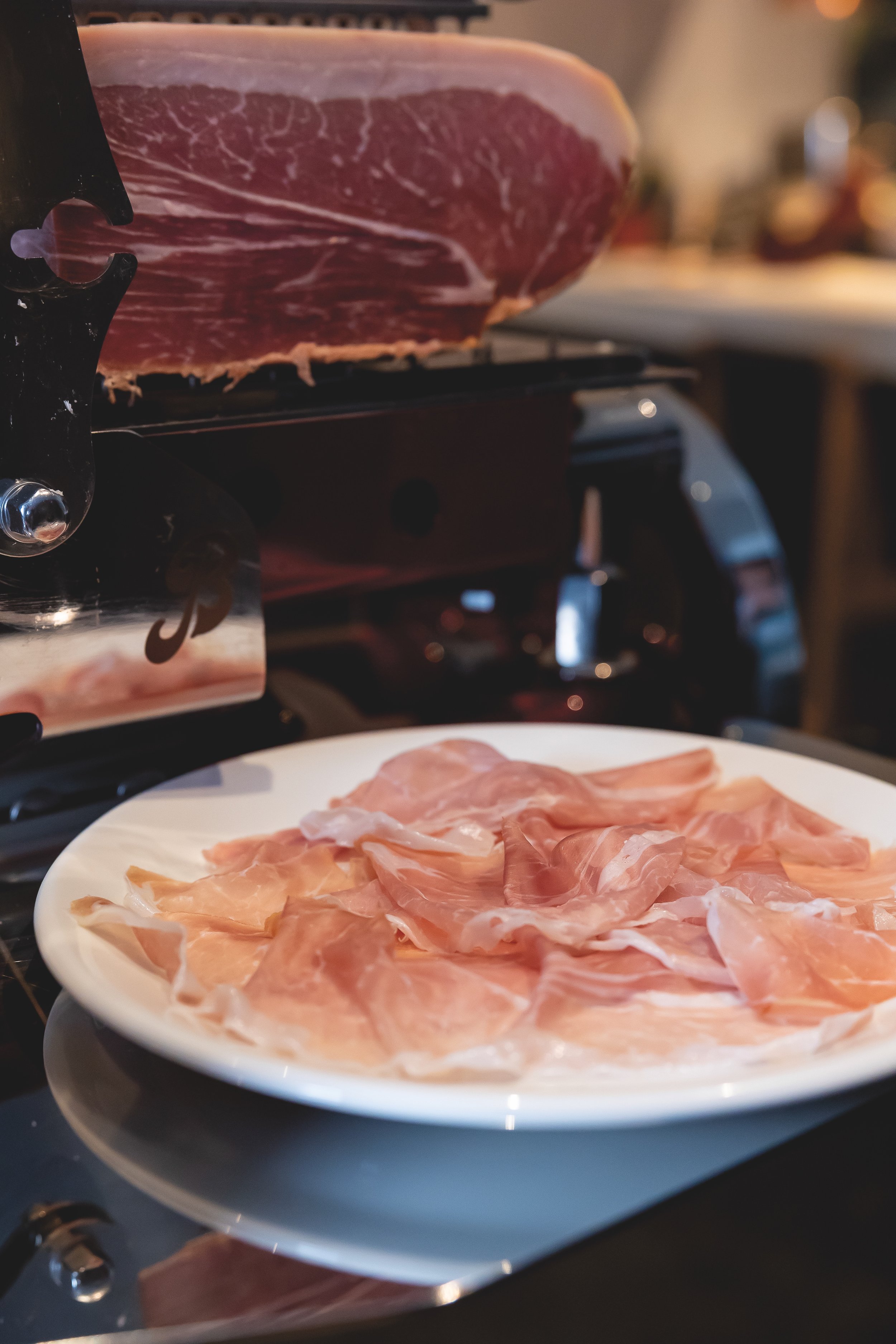Rare Origins





As a truffle aficionado, Kazutomo Robert Hori always remembers the frustration of ordering truffle dishes at restaurants, only to find the delicacy rationed in miserly portions.
“It was too embarrassing to ask for more, so I started asking them to bring the whole truffle to me.”
It still wasn’t enough to satisfy his craving, so he started having specimens from Europe shipped to his home. The only problem was, he says, “I’m a terrible cook.”
So the founder of Cybird Co., which in 1998 became one of Japan’s first mobile content providers, tapped one of his chef friends to come over to his home to prepare truffle dishes. Of course, this was no ordinary chef — but Hiroyuki Kanda, owner of the three-Michelin star Kanda in Minato, Tokyo. And, knowing that Hori is a man of action, Kanda suggested: “You should open a truffle restaurant.”
Margotto e Baciare opened two months later, in September 2014. The Margotto name is an Italianized play on the Osaka dialect term “marugoto,” meaning “the whole piece.” “Baciare” invites guests to kiss their friends after enjoying their meal, a playful acknowledgment of the truffle’s aphrodisiac properties.
Complex chemical compounds in truffles mimic both mammalian pheromones and the intoxicating, feel-good properties of marijuana, hence diners’ attraction to these aromatic, and costly, fungi.
Depending on season and place of origin, these rare forest subterranean finds defy domestication, so a single truffle can range from $5,000 to $15,000. White Alba truffles from Piedmont, Italy, command the highest prices, and will start making their way to tables in October.
After a while, clientele who divide their time between Tokyo and Honolulu started requesting that Hori open a second restaurant in Honolulu. Although Hori had traveled here many times, he said he had never studied the local food scene. He came out for a look last November, and Margotto Hawaii opened six months later.
Although information technology might seem an unlikely background for the restaurateur, hospitality is in his blood. Hori’s grandfather Sennosuke Yamuna was the owner of the ryokan Nanki Shirahama Onsen Hotel Kawakyu — which, after three years of craftsman transformation, reopened as the luxurious Hotel Kawakyu in 1991 — and instilled in him a sense of fine service, which he felt shouldn’t be showy but invisible.
At the ryokan, employees queried arriving guests about their journey to gauge their mindset, or felt their shoes upon removal to measure their body heat, relaying the information to tea makers who then prepared a warm or chilled tea with particular leaves to address their possible physical and mental condition.
“The guests never know this, but they feel comfortable and appreciative without knowing why. If they knew they were receiving something extra, they might feel obligated or feel bad to have burdened someone,” Hori says.
Similarly, Margotto’s interior is understated to put diners at ease. The words “miyabi” and “iki” describe a sense of effortless refinement and elegance that is part of the Japanese aesthetic and informed the artwork that graces one of the restaurant’s partitioned rooms. It’s painted with a golden moon in reference to a time when Japan’s elites followed evenings of food and drink by retreating to elaborate moon gardens to write poetry.
It’s a fitting ode to the truffle, which sparks rapture in many due to its musky, nutty, ethereal and earthy scent. But researchers have found that about 25% of the population cannot smell androstenone, a chemical that contributes to the truffle’s enticing aroma, and have no clue what the fuss is about. And those overly sensitive to androstenone would say a truffle is as appetizing as wet socks.
If you happen to find yourself in either camp, don’t worry, you’re not obliged to eat truffles. Only about half the dishes on a 10-course $100 tasting menu include them, and because of their delicate quality, the truffles are not cooked but shaved raw, if desired, over simple dishes that showcase the truffle’s unique flavor profile.
Dishes include the classic Italian cacio e pepe, as well as fried egg toast, which is a highlight on the Tokyo restaurant’s menu. Recent menus have featured several seafood courses and a trio of optional supplements, including a caviar-topped blini and choices of Duroc pork or A5 wagyu served with gruyere-enhanced potato gratin.
Guests specify the quantity of truffle they want by dollar amount or weight by grams. Black summer truffles from Burgundy were recently priced at $1 per gram and $20 to $25 will get you a generous amount of truffles. Fall and winter’s more desirable aromatic specimens may cost about $3.50 per gram.
Adding to the opulence of the Margotto experience, the restaurant is among the few Krug Ambassade destinations, representing gastronomic excellence. The restaurant houses 90% of Krug champagne available in Hawai‘i, as well as fine wines overseen by Lee Kamimura, who spent 20 years with Alain Ducasse restaurants before returning home in 2019.
Wine pairings range from about $80 to a premium $120 tasting, and Kamimura maintains a database of customers’ tastings and preferences, so with each meal, you can expect a new experience. These might include a sampling of rare wine futures, or pre-releases of in-demand vintages, which give diners an exciting preview as to how the wine may evolve with aging.
As a result of helping guests to relax and feel welcome, Hori says, “The more they feel at home, the more demanding they become.”
When one guest requested local amaebi, Hori went searching for it, and added it to the menu as a supplemental special for others to also enjoy.
“We listen to demands and do our best to make it happen. It’s a lot of extra work, but it makes people happy.”
Margotto Hawaii, 514 Pi‘ikoi St., 808-592-8500, margotto-hawaii.com
